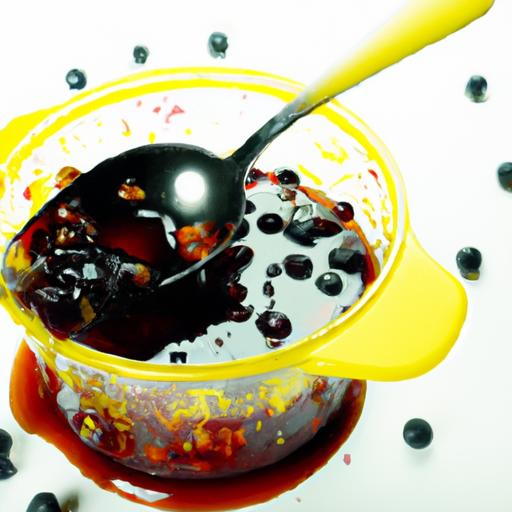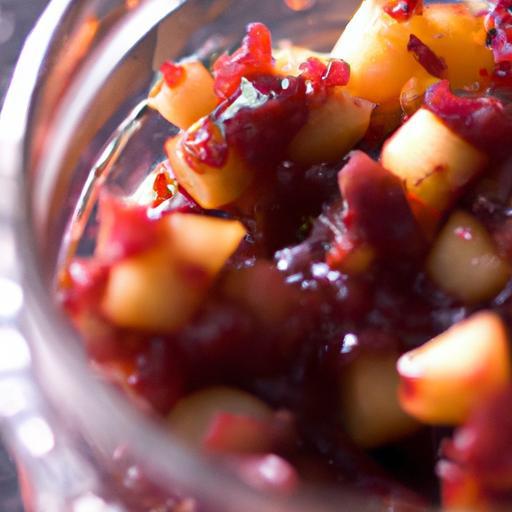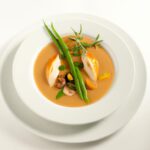There’s a unique alchemy in jam-making-a dance of fruit, time, and just the right amount of sweetness. But behind every luscious spoonful lies a secret ingredient that often gets overlooked: sugar. Not all sugars are created equal, and choosing the perfect one can transform your homemade jam from merely good to irresistibly sweet success. From classic granulated to adventurous alternatives, understanding how each sugar interacts with your fruit will unlock new textures, flavors, and preserving powers. Join us as we explore the sweetest side of jam-making and uncover the key to turning your kitchen creations into jars of pure delight.
Balancing Sweetness and Texture: Exploring Sugar Varieties for Jam-Making
Sweet Success in jam-making begins with a deep appreciation for sugar varieties and their distinct impacts on texture, flavor, and preservation. When you understand how each sugar type interacts with fruit, pectin, and acid, you create jams that boast perfect consistency and a natural balance of sweetness that delights the palate.
Prep and Cook Time
- Prep Time: 15 minutes
- Cook Time: 20 minutes
- Total Time: 35 minutes
Yield
Makes approximately 4 half-pint jars (around 2 cups each)
Difficulty Level
Medium – requires attention to detail and precise sugar management for perfect jam texture
Ingredients
- 4 cups fresh fruit (berries, peaches, or plums), chopped
- 3 cups granulated sugar (or specialty sugar of choice)
- 2 tablespoons lemon juice (freshly squeezed)
- 1 packet fruit pectin (if needed for low-pectin fruits)
- Optional: ¼ cup raw cane sugar or muscovado sugar for enhanced flavor and color
Instructions
- Prepare your fruit: Wash, hull, and chop to uniform pieces. This ensures even cooking and a consistent jam texture.
- Mix fruit and pectin: In a large saucepan, combine fruit and pectin. Stir gently to distribute evenly. Pectin is essential for setting, especially when using low-pectin fruits.
- Add sugar gradually: Stir in the granulated sugar slowly, allowing it to dissolve evenly. For a richer color and deeper flavor, swap half the granulated sugar for a specialty sugar like muscovado.
- Cook on medium heat: Bring the mixture to a boil, stirring frequently to prevent scorching. Once boiling, maintain a rolling boil for 1-2 minutes.
- Check jam consistency: Perform a gel test by placing a spoonful on a chilled plate. If it wrinkles when pushed, your jam is ready.
- Finish with lemon juice: Remove from heat and stir in fresh lemon juice to enhance natural acidity and preserve the vibrant fruit flavors.
- Jar and seal: Pour jam into sterilized jars while hot. Secure lids and cool at room temperature away from drafts.
Chef’s Notes: Tips for Sweet Success
- Focus on sugar quality: Fine granulated sugar yields a clean, bright jam, while specialty sugars like turbinado or demerara add subtle molasses notes and deepen color beautifully.
- Natural sugars balance: Honey or maple syrup can substitute part of the granulated sugar but will affect set time; reducing pectin accordingly is crucial.
- Measuring tricks: Use dry measuring cups for granulated sugars and liquid measuring tools for syrups to maintain precision and consistency.
- Texture control: For chunkier jam, reduce cooking time slightly; for smooth spreads, strain or mash fruit thoroughly before cooking.
- Preservation tip: Always sterilize jars and lids properly to ensure your jam keeps its fresh flavor and texture for months.
Serving Suggestions
Spoon your shimmering jam over fresh artisan bread or warm scones for a comfort-filled morning treat. Add a dollop atop creamy Greek yogurt with a sprinkle of toasted nuts for layered textures and flavors. For a striking presentation, garnish with edible flowers or fresh mint leaves to enhance vibrant fruit colors and create a feast for the eyes as well as the palate.

| Nutrient | Per Serving (2 tbsp) |
|---|---|
| Calories | 60 |
| Protein | 0g |
| Carbohydrates | 15g |
| Fat | 0g |
Discover more about preserving seasonal fruits and expert pectin use in our Fruit Preservation Techniques guide. For an in-depth exploration of sugar chemistry and its role in jams, visit the Natick Labs Sugar Chemistry Resource.
Q&A
Q&A: Sweet Success – Choosing the Perfect Sugar for Jam-Making
Q1: Why is sugar so important in making jam?
A1: Sugar is the unsung hero of jam-making. It not only sweetens but acts as a natural preservative, helping to set the jam’s texture and extend its shelf life. Without sugar, your fruity concoction risks becoming runny or spoiling quickly.
Q2: Can I use any type of sugar for my jam?
A2: Not quite! While white granulated sugar is the classic choice, each sugar type offers unique flavors and textures. For example, raw sugar adds a caramel hint, honey can provide floral notes, and brown sugar lends a rich, molasses depth. The key is balancing taste, texture, and setting properties.
Q3: What about low-sugar or no-sugar alternatives?
A3: You can make jams with less sugar or sugar substitutes, but it requires different techniques and often pectin to achieve proper gel. Low-sugar jams have a fresher, more tart character but usually don’t last as long without refrigeration.
Q4: How does sugar affect the jam’s setting process?
A4: Sugar helps fruit and pectin molecules link together, forming a gel that gives jam its signature spreadable texture. Too little sugar and the jam stays runny; too much sugar, and it can become overly firm or crystallized.
Q5: Is natural fruit sweetness ever enough without adding sugar?
A5: Most fruits don’t have enough natural sugar alone to achieve the perfect set and preservation. However, some fruits like ripe strawberries or figs can be gently cooked down with minimal added sugar, especially if you use high-pectin varieties or pectin additives.
Q6: Any tips for choosing sugar based on fruit type?
A6: Absolutely! Lighter fruits like berries work beautifully with white or raw sugar for a clean, bright flavor. Heavier fruits like plums or cherries benefit from brown sugar or honey that complements their deeper notes. Experimenting can lead to unexpectedly delicious results.
Q7: Can sugar substitutes like stevia or agave work in traditional jam recipes?
A7: Sugar substitutes often lack the bulk and chemical properties of granulated sugar, making it tricky to get a good set or preservation. Using pectin specifically designed for low/no-sugar jams is usually necessary if you want to go this route.
Q8: What’s the bottom line for achieving sweet success?
A8: Know your fruit, understand the role of sugar, and don’t be afraid to experiment. The perfect sugar not only sweetens your jam but elevates its flavor, texture, and longevity. With the right choice, every jar becomes a golden jar of homemade happiness.
Key Takeaways
As you embark on your jam-making journey, remember that the sugar you choose is more than just a sweetener-it’s the unsung hero that shapes texture, flavor, and preservation. Whether you opt for classic granulated sugar, dive into the world of raw turbinado, or experiment with natural alternatives, each choice whispers a different story into your pot of fruit. By understanding the unique qualities of your sugar, you unlock the secret to a luscious, perfectly set jam that sings with every spoonful. So, stir with intention, sweeten with knowledge, and savor the sweet success of your homemade masterpiece.


